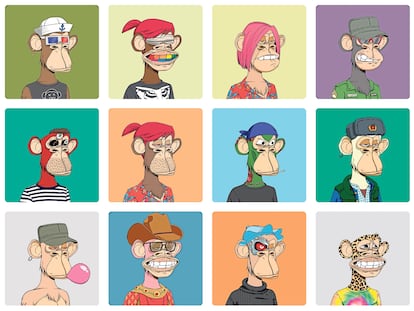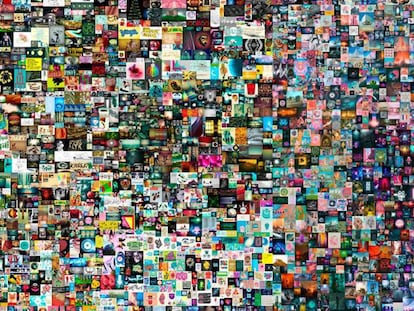An NFT sold for $2.9 million is now worth $280: Has the bubble burst?
After reaching a peak in late 2021 of close to $2.9 billion, sales of art-related NFTs fell to under $1.5 billion in 2022, according to an Art Basel and UBS Global Art Market report

By early 2021, NFTs — or non-fungible tokens — were already part of popular culture. And interest was rising. Almost overnight, hundreds of artists became millionaires. Celebrities such as soccer player Cristiano Ronaldo and social media influencer Paris Hilton signed up to sell their own NFTs and to become buyers. The fever reached its peak when an NFT of Twitter co-founder Jack Dorsey’s first tweet sold for $2.9 million. The tweet “Just setting up my twttr” — which Dorsey posted in March 2006 — was purchased by Malaysia-based entrepreneur Sina Estavi on the Valuables platform. A year later, in April 2022, the tycoon tried to resell the NFT at auction. He announced that half of the proceeds would go to charity. He expected to make around $48 million. When the auction closed after seven days, the highest bid was just $280. Has the NFT bubble burst?
The NFT of Jack Dorsey’s 1st tweet, which sold for $2.9 million last year, failed to gain interest when it was recently put up for resale
— JACKIS (@i_am_jackis) April 13, 2022
The auction closed with only 7 offers ranging from just 0.0019 to 0.09 #ETH ($6 to $280). Far cry from the $48 million sought by the owner pic.twitter.com/Kqnigrd5NO
April 2022 — the date of the failed auction — is often cited as when the NFT bubble burst. At least by those who think that this is genuinely the case. NFTs are a virtual asset with an associated certification of authenticity and proof of ownership that is generated using the same blockchain technology used by cryptocurrencies. NFT critics who say the trend is over point to a combination of factors: uncontrolled speculation, the fall of cryptocurrencies — NFTs are bought with Ethereum, the second most popular cryptocurrency after bitcoin — and the reorganization of the art sector, which grew unsustainably in the wake of the NFT boom. The NFT market has dropped 50% in one year. After reaching a peak in late 2021 of close to $2.9 billion, sales of art-related NFTs fell to under $1.5 billion in 2022, according to the Art Basel and UBS Global Art Market annual report.
Clare McAndrew, founder of Art Economics and author of the report, can only recall a few similar incidents. “In the late 1980s, early 1990s, the market fell 60% in a year after the Japanese suddenly stopped buying.” Art was also a victim of the 2008 financial crisis, with losses of 40%. But the losses were not concentrated in one specific sector, as is the case now with NFTs.
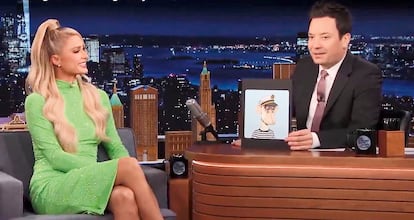
The NFT sector admits that the valuations and the amount of money being paid for these digital works was at times exaggerated, even constituting a bubble. “It’s clear that there was an unsustainable fervor from people launching projects and people buying them thinking they were going to rise,” says Raúl Marcos, CEO of Carbono.com, a platform that advises investors and designs project launch strategies for crypto entrepreneurs.
The falling value of cryptocurrencies has contributed to the volatility of NFT prices. Ethereum, the digital currency with which most of these works are paid for, fell 70% against the dollar in 2022, which automatically reduced the value of the images. And art sales on the Ethereum network went from 24% in 2020 to 8% in 2022, according to the Art Basel report. This year, however, the cryptocurrency is regaining ground, rising 65%. Its value, however, is still half what it was during its November 2021 peak.
One of the problems NFTs face is lack of liquidity. An investor can sell bitcoin or Ethereum at any time, since there is a market of buyers and sellers that operates 24 hours a day, seven days a week. But when someone sells an NFT, they have to set a price and wait, not knowing if someone will pay that amount or if its value will plummet.

Raúl Marcos insists, however, that NFTs continue to perform well, citing the CryptoPunks and the monkey avatars of the Bored Ape Yacht Club as examples. In these collections, the cheapest NFT artwork costs more than $100,000.
Beatriz Ordovás, a senior director of Christie’s in Spain, says that many NFTs were “not worth” the money paid for them, pointing out some investors joined the trend solely to make a profit, and lacked artistic knowledge. According to Ordovás, these buyers bought up NFTs to make a quick turnaround, but were soon disappointed, leading to a “mass withdrawal from the market.”
Christie’s went from making more than $100 million from NFT sales to just $6 million in 2022. “The last six months for which we have data, we have had very solid sales of digital art,” said the auction house. “Very good artists, works that really pass the quality filter, continue to sell,” it added. Ordovás explains that not a single digital work has remained unsold. She calls it “logical organic growth.” “The industry keeps moving forward, there are serious people attentive to these sales, whether or not they are digital collectors,” she added.
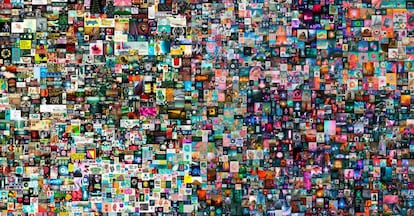
There have also been changes in the NFT market: not only with buyers, but also with respect to the artists. Like CryptoPunks, there continues to be a market for NFT animator Beeple. The graphic designer — whose real name is Michael Joseph Winkelmann — made history when his digital artwork titled Everydays – The First 5000 Days sold for more than $69 million at Christie’s in March 2021. Winkelmann continues to make digital art, but now complements this work with physical pieces, explains Ordovás.
The expert gives another example: Tyler Hobbs, the most visible face of so-called generative art, a discipline that, like NFTs, requires code for creation. At the same time that the NFT market was falling, Hobbs was exhibiting in New York and selling his pieces for hundreds of thousands of dollars. “It is largely an exploration of how digital art can become more human, and physical art more systematic,” Hobbs said in an interview with Wallpaper. “It’s a mixture of works created by hand, created by machine or created by a combination of the two. [...] There is a lot of fertile ground there.”
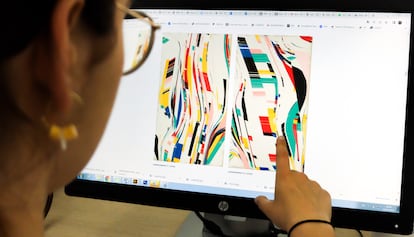
Buyers are already looking for ways to recover their investment and to continue supporting digital artwork. With this in mind, investors are now focusing on what is known as Web 3.0. If Web 1.0 was the internet of links and Web 2.0 the internet of social media, this new phase of the internet aims to be more decentralized and democratic. And to achieve this, tokens and blockchain are set to play a key role. In other words, there is growing interest in how to create a system in which users can buy and sell cryptocurrencies via secure platforms without intermediaries. “It has always been a problem for a collector to understand how to acquire the property rights of a digital work,” explains McAndrew, who is confident that new applications will allow transactions to become more direct. According to McAndrew, this shift will help technology be used in a more positive way, where the focus is not just on “speculation.”
Sign up for our weekly newsletter to get more English-language news coverage from EL PAÍS USA Edition
Tu suscripción se está usando en otro dispositivo
¿Quieres añadir otro usuario a tu suscripción?
Si continúas leyendo en este dispositivo, no se podrá leer en el otro.
FlechaTu suscripción se está usando en otro dispositivo y solo puedes acceder a EL PAÍS desde un dispositivo a la vez.
Si quieres compartir tu cuenta, cambia tu suscripción a la modalidad Premium, así podrás añadir otro usuario. Cada uno accederá con su propia cuenta de email, lo que os permitirá personalizar vuestra experiencia en EL PAÍS.
¿Tienes una suscripción de empresa? Accede aquí para contratar más cuentas.
En el caso de no saber quién está usando tu cuenta, te recomendamos cambiar tu contraseña aquí.
Si decides continuar compartiendo tu cuenta, este mensaje se mostrará en tu dispositivo y en el de la otra persona que está usando tu cuenta de forma indefinida, afectando a tu experiencia de lectura. Puedes consultar aquí los términos y condiciones de la suscripción digital.
More information
Archived In
Últimas noticias
Most viewed
- Sinaloa Cartel war is taking its toll on Los Chapitos
- Oona Chaplin: ‘I told James Cameron that I was living in a treehouse and starting a permaculture project with a friend’
- Reinhard Genzel, Nobel laureate in physics: ‘One-minute videos will never give you the truth’
- Why the price of coffee has skyrocketed: from Brazilian plantations to specialty coffee houses
- Silver prices are going crazy: This is what’s fueling the rally
